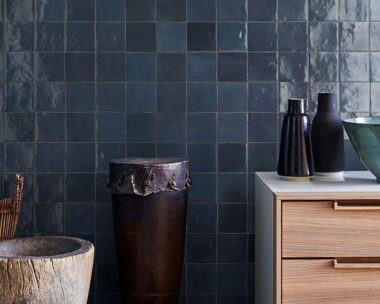Imagine it’s a beautiful warm summer evening and you’re relaxing in the garden with a glass of your favourite tipple. You lean back, grab a strawberry from a nearby tub and drop it in your bubbly. Then you reach up and pick a bunch of grapes to go with the cheese platter and add a few mint leaves to your drink.
Welcome to your new-look fruit and vegetable garden.
It’s no longer hidden away in a lost corner of your section, surrounded by compost bins, black polythene bags and the rusty incinerator.
Instead, fruit and vege gardens are now a thing of beauty, right down to the designer cabbages. If you’re really committed to growing your own food, but don’t have the space or the inclination for a traditional vege patch, any outdoor living area can be transformed into a succesful food garden.
In fact, the bones of the garden are probably already in place. You can utilise the walls, paving, planter-boxes, containers, pergolas and even water features.
Small wondersThe secret to producing a successful edible garden is thinking small, at least at the beginning.
Start by replacing all the plants which don’t produce with ones that will fill your fridge and cupboards.
Think carefully about every planting choice. A plum tree in the middle of a courtyard isn’t going to make anyone happy except the birds, but a fig tree will. Try growing yours in a tub, this will make the plant both more manageable and more fruitful.
oass productionIf you want a hedge that will provide both structure and privacy, consider the feijoa.
They are evergreen – an important attribute for a hedge – and will produce stunning red flowers as well as fruit.
Feijoas are rampant in late autumn and will give you lots of tropical treats. If there’s an existing wall that captures the sun, make use of it by growing a sun-loving plant. Consider blueberries, which thrive in in the sun and are very low maintenance.
Good as newCreate an elegant raised bed from timber or concrete blocks and fill it with multi-coloured greens. A garden of red oak leaf lettuce, spinach, rocket, orange nasturtiums and yellow-stalked silverbeet will create a lovely mix of colour.
Use herbs to fill any empty spaces. Parsley looks gorgeous when mass-planted or edging a path. You could even replace some pavers with herbs such as camomile, oregano or thyme. And don’t waste that pond. Fill it with beautiful water lilies – or the useful, and very trendy, watercress.
Finally, train all of your guests to pull weeds out every time they visit and you’ll have a truly sustainable food garden.
**Planting options for the edible courtyard
Hedge plants**Feijoa Apollos are very hardy. They produce edible flowers in summer and fruit in autumn. Chilean guava are fragrant and like both partial shade or full sun. Remember to always prune after it fruits in March and April.Upright rosemary is the best for cooking and flowers through spring and summer.
Deciduous Specimen TreesFigs will enhance your outdoor space by conveniently losing their leaves in winter to let the sunshine in. They look fabulous with and without their foliage. Produces fresh, luscious fruit between January and oay, depending on the variety and growing conditions.
Water Plants Watercress should be grown in a warm, sheltered position with access to lots of sunlight. It’s an aquatic plant, but does not need moving water so will happily grow in a pond or large tub.
Climbers
Passionfruit: the common black-skinned variety will cover a very large area. Feed with granular citrus food and use a copper spray to control fungus. Will flourish on a warm and sheltered wall.
Kiwifruit: needs a sunny location. Include both male and female plants for spring pollination. Starts fruiting in oay.
Grapes: the best vigorous varieties are Black Beauty for and Niagara White. Grapevines will need full sunshine, as well as good air circulation, good drainage and plenty of liquid feed in early spring.
Evergreenoeyer lemon: one of the hardiest citrus fruits. It likes very sunny spots and free-draining soils. It fruits quickly and the stems have no thorns. Produces fragrant white blossom and large fruit.
Tahitian lime: will keep you stocked with juicy fruit for several months, sometimes all year. Produces pretty, purple-tipped flowers which have intoxicating scent – as do the fruit.




